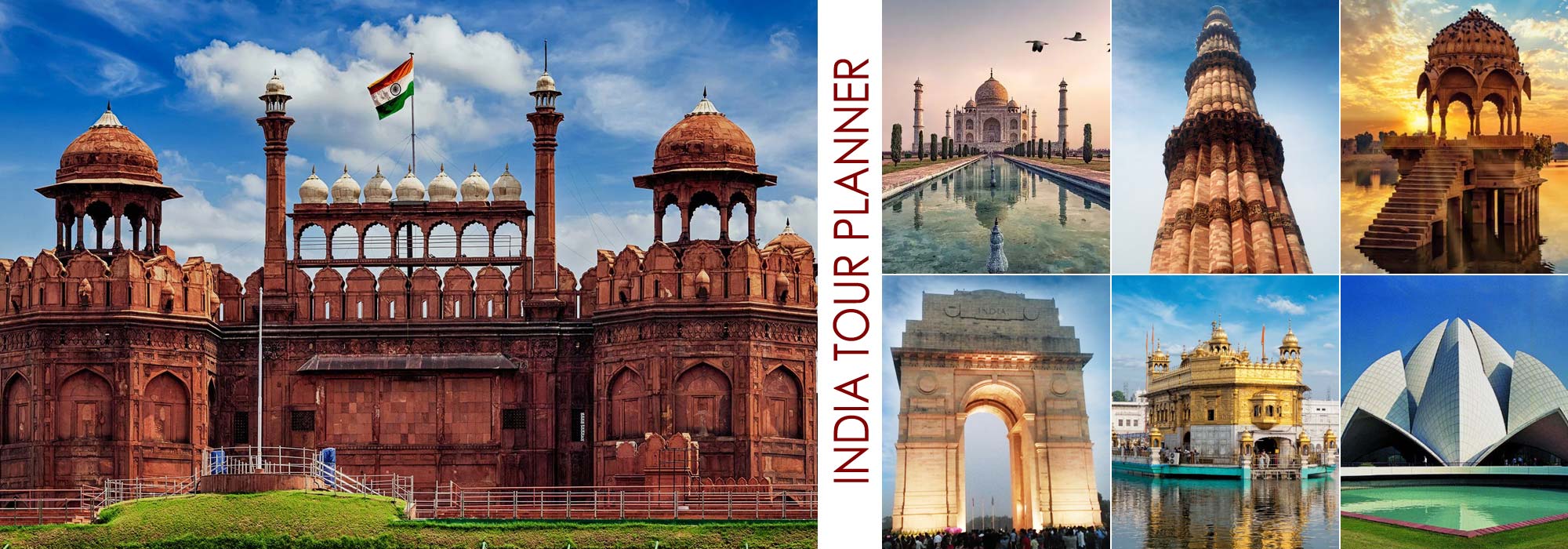
Agra Tourism
Agra is one of the most popular tourist destinations of the World with three UNESCO World Heritage monuments - Taj Mahal, Fatehpur Sikri & Red Fort. Agra was first mentioned in the epic Mahabharata, where it was called Agrevana meaning the border of the forest. Sultan Sikandar Lodi (1488-1517) was the first to move his capital from Delhi to Agra in 1504. After his death in 1517, his son Ibrahim Lodi continued to rule, until his defeat in the first battle of Panipat at the hands of the Mughal Emperor Babur in 1526. Agra famously became the capital of the Mughal Emperors from 1526 to 1658. It was known then as Akbarabad and remained the capital of the Mughal Empire under the Emperors Akbar, Jahangir and Shah Jahan. Shah Jahan has shifted the capital to Delhi.
The city houses many ancient temples, mosques, forts, mausoleums, tombs and historical monuments. Apart from the Taj Mahal, Agra Fort, Fatehpur Sikri, Akbar's Tomb, Sikandra, Swami Bagh Samadhi, Jama Masjid and Ram Bagh are the other important monuments in Agra. The city has its unique style of traditional paintings, folk dances, folk music and embroideries. Agra is famous for leather goods, beautiful carpets, gold and silver jewellery and handicrafts, such as zari zardozi, marble and stone carving and inlay work.
The Department of Tourism organizes the Taj Mahotsav in February every year, which attracts national and international tourists to Agra. The festival celebrates Mughal art and culture and is a profusion of musical and dance performances, a food festival and crafts mela.
Agra is well connected by air, train and road. The nearest airport to reach Agra is Kheria Airport, located at a distance of 9 km from the city and is connected to Delhi, Varanasi, Khajuraho, Gorakhpur, Jabalpur, Rajkot and Jamnagar. The city has four major railway stations - Agra Cantonment, Raja Ki Mandi, Agra Fort and Idgah Agra Junction. It has trains from Mumbai, Delhi, Amritsar, Hyderabad, Vizag, Chennai, Indore, Jammu, Jabalpur, Pondicherry, Chandigarh, Kalka, Hubli, Goa, Haridwar, Bhopal, Howrah, Patna, Dehradun, Bangalore, Allahabad, Jaipur, Trivandrum and Lucknow.
Major bus station in Agra is Idgah Bus Stand at a distance of 1.5 km from Agra Cantonment railway station. Agra can also be reached by road from Lucknow, Kanpur, Delhi, Ahmedabad, Gwalior, Noida, Dehradun, Jaipur, Jodhpur, Indore, Haridwar and Vrindavan. Tourist buses run by private operators as well as state govt are available to reach Agra. Tourists can travel around the city of Agra using electric buses, cabs, Tongas, tempos, cycle rickshaws and auto rickshaws.
The best time to visit Agra is during the winter season between November and March. During this time the temperature is moderate and several festivals coincide. Taj Mahotsav, the popular 10 day long festival is celebrated during the month of February each year. A visit to this fair is a must for the art, craft and culture admirers. Ram Bharat, Kailash Fair and Bateshwar Fair are the other major festivals.
Taj Mahal :
The Taj Mahal is an immense mausoleum of white marble, built between 1631 and 1648 by order of the Mughal emperor Shah Jahan in memory of his favourite wife. Taj Mahal means Crown Palace. One of his wife’s names was Mumtaz Mahal, Ornament of the Palace. The Taj is one of the most well preserved and architecturally beautiful tombs in the world, one of the masterpieces of Indian Muslim architecture, and one of the great sites of the world’s heritage.
The Taj Mahal has a life of its own that leaps out of marble, provided you understand that it is a monument of love. The Indian poet Rabindranath Tagore called it a teardrop on the cheek of eternity, while the English poet, Sir Edwin Arnold, said it was Not a piece of architecture, as other buildings are, but the proud passions of an emperor’s love wrought in living stones. It is a celebration of woman built in marble, and that is the way to appreciate it.
Agra Fort :
The Taj and the Yamuna River from the ramparts of Agra Fort. The fort is similar in layout to the Red Fort in Delhi, but considerably better preserved, as much of Delhi Fort was razed by the British after the Mutiny. As much as palace as a defensive structure, it is also constructed mainly from red sandstone.
Akbar's Tomb Sikandra : Sikandra Open from sunrise to sunset. The tomb of Akbar lies here in the centre of the large garden. Akbar started its construction himself but it was completed by his son Jahangir, who significantly modified the original plans which accounts for the somewhat cluttered architectural lines of the tomb. Four red sandstone gates lead to the tomb complex: one is Muslim, one Hindu, one Christian, and one is Akbar’s patent mixture.
Fatehpur Sikri :
It was built in the the 16th century by the Emperor Akbar, Fatehpur Sikri (the City of Victory) was the capital of the Mughal Empire for about 10 years. Then it was abandoned for reasons that are still something of a mystery. It includes one of the largest mosques in India, the Jama Masjid. It is full of well preserved palaces and courtyards, and this UNESCO world heritage site is a must see for anyone visiting Agra.
 +91 9799050299
+91 9799050299 
